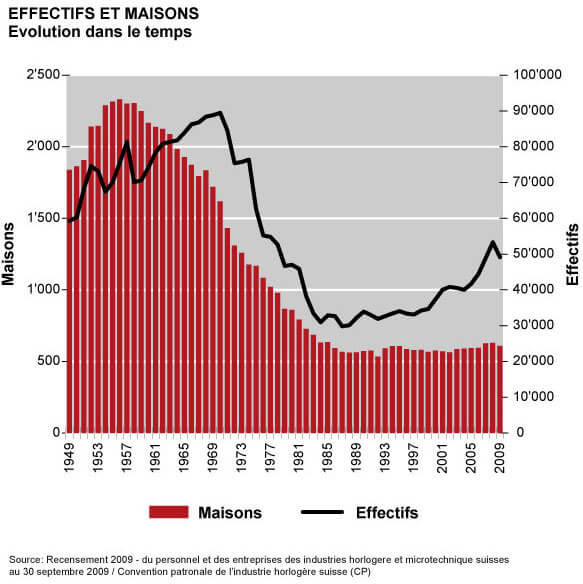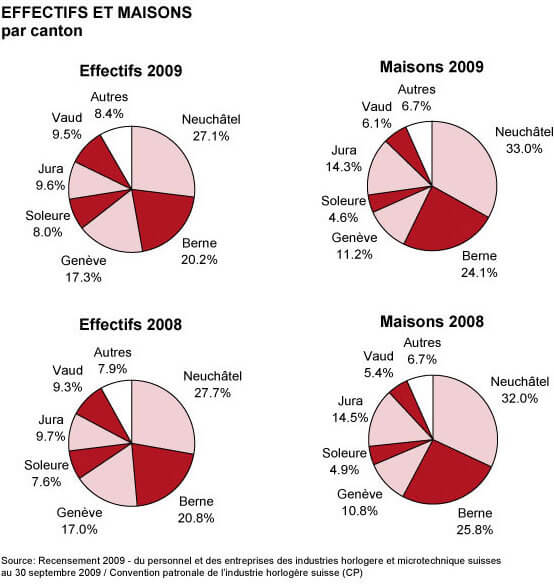The latest census by the Convention Patronale de l’Industrie Horlogère Suisse (CP) has confirmed the figure already on everyone’s lips: the watch industry lost 4,200 jobs at September 30th 2009, decreasing from 53,300 to 49,097. This 7.9% drop compared with 2008 takes employment in the industry to a level similar to that of 2007 (48,835), before the impressive increase of 2008 when the sector created 4,465 new jobs. This figure is not as bad as forecast. As for the number of companies, it fell by 3.2% with 20 firms closing down.

Regardless of this downward trend, the CP notes that the number of people employed by the Swiss watch industry in 2009 was the second-highest level in thirty years, after reaching an all-time low in 1987 with 29,809 employees. Since then, the sector has continued to hire, with close to 40,000 employees in 2004 and over 53,000 four years later. Despite losing jobs in 2009, the sector can boast a net increase of more than 9,000 workers (+22.7%) over the past five years. Unsurprisingly in times of recession, production staff have borne the brunt of job cuts. Their number fell by 9.8% from 40,224 to 36,275.

Apprenticeships untouched
In a lean economic climate, the good news announced by the CP is the high level of qualifications of staff in the watchmaking and microengineering branches. The percentage of staff with a higher education diploma increased 0.8 percentage point (16% of total employees versus 15.2% in 2008). The number of staff with a vocational qualification rose from 43.5% to 45%. The percentage of unqualified staff dropped 2.5 percentage points from 39.4% in 2008 to 36.9% in 2009. This reflects ongoing efforts within the branch to train staff. Temporary reductions in work implemented in 2009 (short-time working) also helped safeguard the industry’s qualified labour force, a source of expertise for companies.
Good news too for the number of apprenticeships, the only category to have swelled its ranks last year. After sharp increases in 2007 and 2008 (+25% in two years), the number of apprentices grew again in 2009, gaining 3.7%. In absolute terms, the branch created 36 new apprenticeships compared with the previous year. Apprentices account for 2.2% of the total workforce, up 0.3 percentage points on 2008 (1.9%). Proof that the industry is taking a long-term view.










